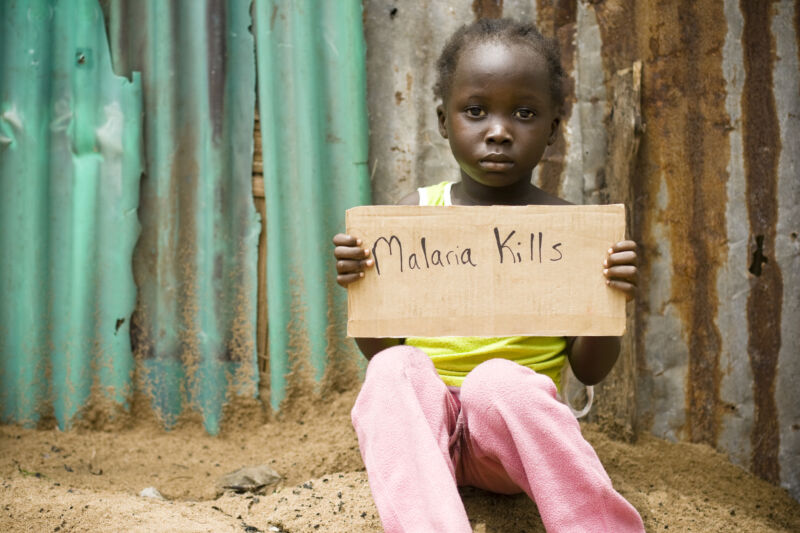Even after 140 years of its discovery, malaria remains one of the deadliest infections humans have ever encountered. It affected 247 million individuals and was responsible for over 600,000 deaths in 2022, according to the World Health Organization. What’s more shocking is that 95 percent of malaria cases and deaths are reported in Africa alone, and 80 percent of the people who die in various African countries due to malaria are children under 5.
Currently, there exists only one malaria vaccine called RTS,S, and it only offers partial protection in children. However, a newly developed vaccine elicits a much stronger immune response in children, and it could offer layered protection to everyone by targeting a different stage of the malarial parasite’s life cycle.
The RH5 vaccine
A team of researchers from the University of Oxford recently tested a new malaria vaccine on 63 participants ranging in age from 6 months to 35 years in Bagamoyo, a town in Tanzania. The vaccine is technically ChAd63-MVA RH5, but generally called the RH5 vaccine. It exclusively targets RH5, a protein that Plasmodium falciparum (malaria parasite) employs to penetrate human red blood cells.
“RH5 is essential for the parasite to invade red blood cells and survive. Without it, the parasite will die. An RH5 vaccine stimulates the body to produce antibodies against the RH5 protein. These antibodies will bind to RH5 and if there are enough antibodies that bind, they will prevent the parasite from invading the red blood cells and causing the disease,” Dr. Angela Minassian, chief research investigator and a clinician scientist at Oxford, told Ars Technica.
Before testing the vaccine, the participants were divided into different groups based on their age (infants, teenagers, and adults). The researchers then conducted a double-blind trial in which neither the participants nor the health care workers who administered the doses didn’t know who received the malaria vaccine and who received a rabies vaccine that acted as the control.
Those who were administered the malaria vaccine developed antibodies targeting RH5. When these antibodies were tested against P. falciparum in lab settings, they prevented the growth of the pathogen, limiting it to levels that should protect against the disease.
Apart from mild fever and injection pain, none of the participants experienced any side effects from the vaccine during or after the trial period. The people who ran the trial note, “There were no serious adverse events (SAEs), adverse events (AEs) of special interest (AESIs), or unexpected reactions and no safety concerns during the course of the trial.”
In contrast to the RTS,S vaccine, RH5 triggered the most robust immune response in the group comprising infants 11 months old or younger. The next best malaria immunity was observed in 1- to 6-year-old children. The study authors said, “Higher anti-RH5 serum immunoglobulin (Ig) G responses were observed post-boost in young children and infants compared to adults.” They added, “Why the infants and young children vaccinated with ChAd63-MVA RH5 induced such high levels of antibody remains to be fully understood.”
Layered protection?
In the last two years, the RTS,S vaccine, which is currently being used in Malawi, Ghana, and Kenya, has prevented thousands of malaria deaths. The UN recently announced that nine more African countries will soon receive their first batch of RTS,S, and it plans to allocate 18 million RTS,S vaccine doses this year. WHO is reviewing another vaccine called R21 that showed 80 percent efficacy during its initial trials.
Both RTS,S and R21 are anti-sporozoite vaccines, which means they can prevent the malaria parasite’s spores from infesting the liver (plasmodium first enters the liver, then invades the blood, and from there, the infection spreads throughout the body). If somehow the pathogen makes it to the bloodstream despite these vaccines, they won’t offer any protection.
The RH5 protein, in contrast, is essential for the spread of the parasite to the blood. So the new vaccine should provide blood-stage protection that can work as a “second line of defense” against malaria. Even if some P. falciparum spores evade the RTS,S response, the antibodies produced by the new vaccine will still limit the parasite’s ability to enter red blood cells.
Med, 2023. DOI: http://dx.doi.org/10.1016/j.medj.2023.07.003 (About DOIs)
Rupendra Brahambhatt is an experienced journalist and filmmaker. He covers science and culture news, and for the last five years, he has been actively working with some of the most innovative news agencies, magazines, and media brands operating in different parts of the globe.



3175x175(CURRENT).thumb.jpg.b05acc060982b36f5891ba728e6d953c.jpg)

Recommended Comments
There are no comments to display.
Join the conversation
You can post now and register later. If you have an account, sign in now to post with your account.
Note: Your post will require moderator approval before it will be visible.